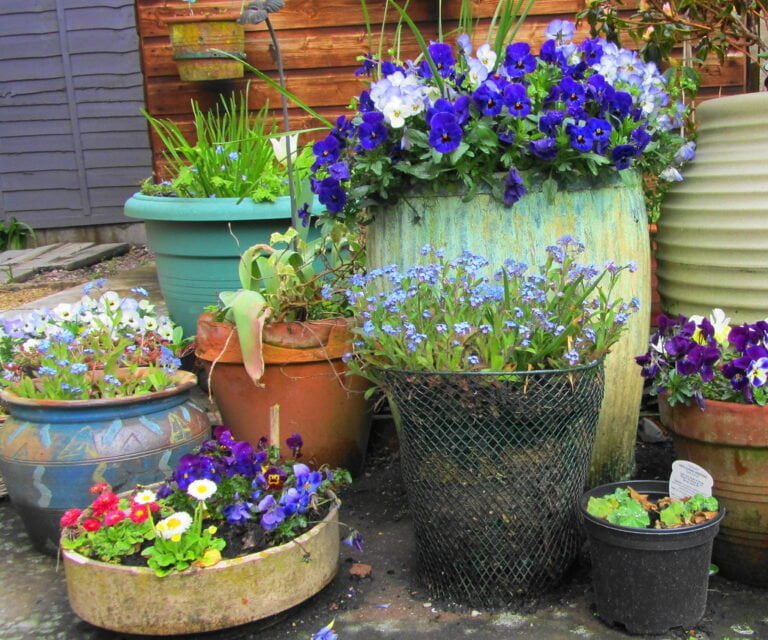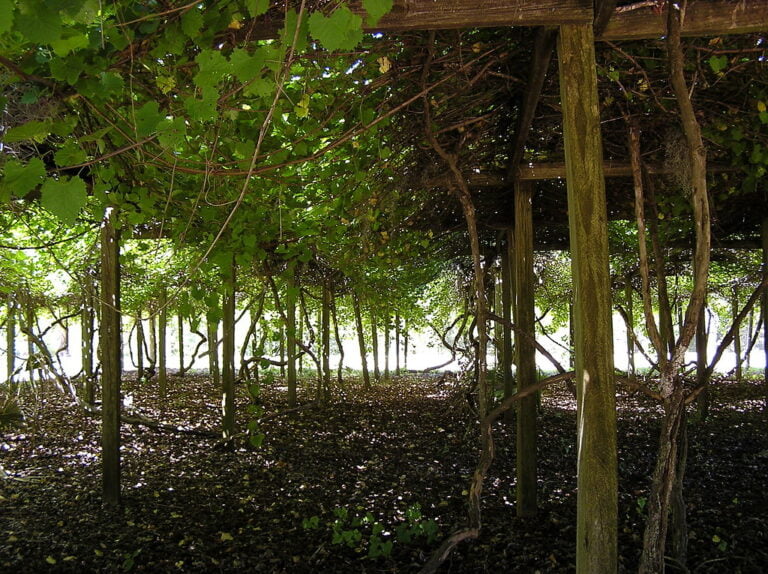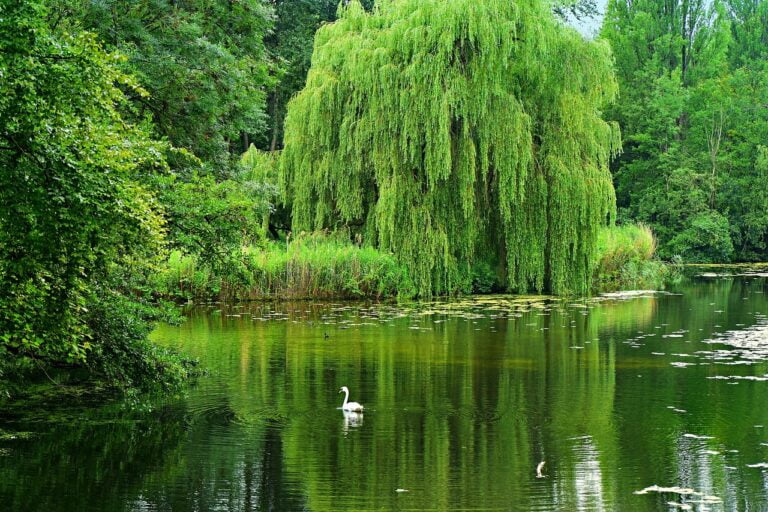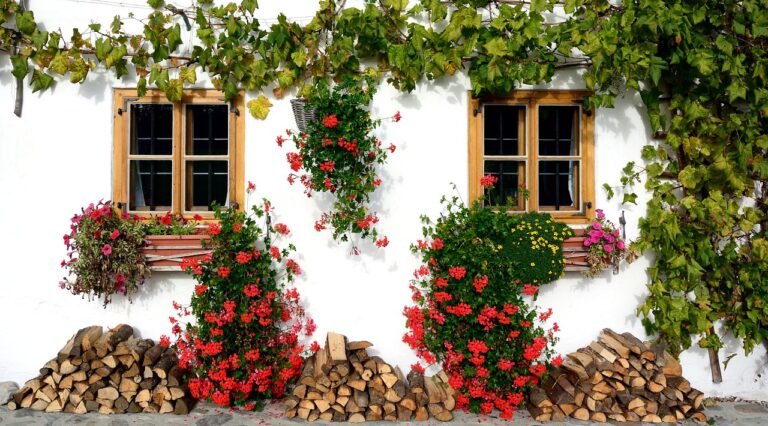Addressing Common Problems in Shade Gardening: Dryness, Poor Drainage, and Overhanging Trees
Dealing with dryness, poor drainage, and overhanging trees in shade gardening demands strategic solutions. Prioritize selecting moisture-loving plants like Astilbe and Ligularia that thrive with limited water. Enhance soil drainage with mulching and raised beds while managing tree pruning for best sunlight exposure. Explore supplemental watering and plant selection tailored to combat dryness, and incorporate hardscaping features like terracing for better drainage. Addressing overhanging tree issues through strategic pruning and soil maintenance improves garden health and plant vitality in shaded areas. These tips offer practical insight into creating flourishing shade gardens.
Understanding Shade Conditions
Understanding shade conditions is vital for successful gardening in shaded areas. When dealing with dry shade, such as areas under overhanging trees, it’s important to take into account the limited moisture availability. Dry shade poses challenges for plant growth, as the tree roots compete for water and nutrients, leaving little for other plants. In such conditions, selecting plants with high shade tolerance and low moisture requirements becomes paramount.
Overhanging trees not only create dry shade but also influence the shade patterns in a garden. Depending on the tree species, the shade intensity and duration can vary, affecting the types of plants that can thrive underneath. It’s crucial to observe how the shade shifts throughout the day and seasons to choose suitable plants that can adapt to these changing light conditions.
In shaded areas with overhanging trees, the moisture availability can also be influenced by the tree’s water consumption. Trees absorb a significant amount of water from the soil, potentially leaving the surrounding area dry. This further emphasizes the need to select plants that can withstand both shade and lower moisture levels. By understanding these shade conditions and their implications on moisture availability, gardeners can make informed choices when planning and caring for plants in shaded areas.
Choosing Moisture-Loving Plants
When choosing moisture-loving plants for shady areas, it’s important to make sure they have access to sufficient water supply. These plants, such as Astilbe and Ligularia, have adapted to effectively absorb moisture, making them ideal for locations with inadequate drainage. Select types with shiny leaves like Hostas and Ferns, as they suggest a greater capacity to retain water, aiding in the preservation of soil moisture levels in shade gardens.
Selecting Water-Hungry Plants
In shady gardens that require consistent moisture, selecting water-hungry plants like Astilbe, Ligularia, and Japanese iris is essential for thriving greenery. These water-loving perennials have high water requirements, making them perfect choices for moist shade conditions. Additionally, Ferns, Hostas, and Lungwort are moisture-loving plants that flourish in shady areas with regular watering. For damp shade environments, consider Lady’s Mantle, Solomon’s Seal, and Marsh Marigold, which thrive in moist conditions. To maintain soil moisture levels in shaded gardens, opt for moisture-loving perennials such as Foamflower, Toad Lily, and Cinnamon Fern. Including water-loving plants like Cardinal Flower, Turtlehead, and Siberian Bugloss will help create a lush and thriving shade garden with the necessary moisture for best growth.
Ensuring Adequate Soil Moisture
To guarantee sufficient soil moisture levels in shady gardens, one should prioritize selecting moisture-loving plants such as Astilbe, Ferns, and Ligularia. These plants thrive in damp conditions and can tolerate wet soil, making them ideal choices for areas with poor drainage. Additionally, incorporating water-loving plants like Hostas and Hydrangeas, which prefer consistent moisture levels, can help combat dryness in shade gardens. By selecting plants that thrive in moist conditions, you can address common issues like dryness and poor drainage while maintaining adequate soil moisture levels. Remember, choosing the right moisture-loving plants is key to ensuring a healthy and thriving garden in shaded areas.
Improving Soil Drainage Techniques
When it comes to improving soil drainage in shaded areas, I find that mulching can greatly help with water retention, keeping the soil moist but not waterlogged. Raised beds are another effective technique that I often use to enhance drainage, preventing root rot and other issues caused by excess moisture. Additionally, incorporating compost into the soil not only adds nutrients but also improves aeration, promoting better drainage overall.
Mulching for Water Retention
Mulching in shade gardens plays an important role in enhancing soil drainage by reducing water runoff and erosion, promoting healthier plant growth. Here are some key benefits of mulching for water retention:
- Retaining Soil Moisture: Organic mulches like bark chips or compost act as a sponge, holding water and releasing it slowly to plant roots.
- Preventing Water Evaporation: Mulch forms a protective barrier that reduces water evaporation from the soil surface, helping plants access water more effectively.
- Enhancing Root Development: Proper mulching promotes healthy root growth by providing a stable environment for roots to thrive.
- Regulating Soil Temperature: Mulch helps maintain a consistent soil temperature, creating a favorable environment for plant roots to develop.
Raised Beds for Drainage
How can raised beds effectively enhance soil drainage in shade gardens? Raised beds offer a practical solution for improving soil drainage in shady areas. By elevating the planting area, raised beds allow excess water to drain more efficiently, reducing the risk of waterlogging. The increased height also promotes better aeration, benefiting plant roots. To further enhance drainage, consider filling raised beds with well-draining soil mixes. Additionally, incorporating drainage pipes or gravel at the bottom of the raised beds can assist in managing water flow. Raised beds are versatile and can be tailored to different heights and sizes, making them adaptable to various garden needs. Consider utilizing raised beds to address soil drainage issues and create a healthier environment for your shade garden plants.
Incorporating Compost for Aeration
Raised beds can greatly improve soil drainage in shade gardens by elevating the planting area, but incorporating compost for aeration further enhances this benefit. When dealing with shade plants, ensuring proper air circulation and moisture balance is essential for their health and growth. Here’s how incorporating compost can help:
- Improved Soil Structure: Organic matter in compost enhances soil porosity, reducing compaction and promoting better water infiltration rates.
- Enhanced Microbial Activity: Compost boosts beneficial microbial activity in the soil, aiding in organic matter breakdown and nutrient availability.
- Moisture Regulation: Adding compost helps retain moisture while preventing waterlogging, creating an ideal environment for shade plants.
- Root Development: Compost application fosters root growth by providing a healthy, aerated soil environment for the best plant development.
Selective Tree Pruning for Light
To maximize sunlight in shaded gardens, strategically trimming branches through selective tree pruning can enhance plant growth and diversity. By selectively removing certain branches, you can create dappled light patterns that allow direct sunlight to filter through to the shaded areas below. This increased light exposure promotes healthier plant growth and a more diverse range of species in your shade garden.
Proper selective pruning not only boosts light penetration but also improves air circulation, reduces moisture buildup, and helps prevent fungal issues within the shaded garden space. Additionally, by trimming trees strategically, you can prevent overhanging branches from obstructing structures, pathways, or neighboring properties, enhancing the overall functionality and aesthetics of your garden.
Consulting with a professional arborist or utilizing proper selective pruning techniques is essential to maintain the health and longevity of your trees while optimizing light availability in shaded areas. These practices not only benefit the plants in the shaded garden but also contribute to the overall beauty and balance of your outdoor space. Selective tree pruning for light is a valuable tool in creating a thriving and visually appealing shade gardening environment.
Managing Dryness in Shade Gardens
Dryness in shade gardens poses a common challenge for gardeners due to tree canopies blocking rain and creating soil moisture issues. To effectively manage dryness in shade gardens, consider the following strategies:
- Supplemental Watering: During dry spells, it is essential to provide additional water to plants in shaded areas to maintain adequate soil moisture levels.
- Plant Selection: Choose plants that thrive in dry shade conditions, such as ferns, hostas, and coral bells. These plants are better adapted to withstand lower moisture levels.
- Mulch and Organic Matter: Applying a layer of mulch around plants and incorporating organic matter into the soil can help retain moisture, reducing the impact of dryness in shade gardens.
- Regular Soil Moisture Monitoring: Keep track of soil moisture levels regularly using a moisture meter. This allows you to adjust watering schedules as needed, preventing plant stress and ensuring proper hydration in shaded areas.
Enhancing Drainage in Shaded Areas
Improving drainage in shaded areas is important for maintaining healthy plants and preventing waterlogging issues. In areas with less sunlight, excess water can accumulate, leading to root rot and other plant health problems. One effective way to enhance drainage in shaded gardens is by incorporating hardscaping features such as stone walls and terracing.
Hardscaping elements like stone walls and pathways play a vital role in creating seep-down pockets that help manage water runoff in shaded areas. By strategically placing these features, you can prevent water from pooling around plant roots and guarantee proper drainage. Terracing, in particular, can be a valuable technique to slow down water runoff and prevent waterlogging in shaded regions.
Careful implementation of hardscaping can greatly aid in water management, especially in dry-shade garden settings where maintaining the right balance of moisture is essential for plant survival. Using native stone for hardscaping not only provides cost-effective solutions but also blends well with the natural environment, enhancing the overall aesthetics of the garden while improving drainage.
Addressing Issues With Overhanging Trees
When dealing with overhanging trees in shaded gardens, evaluating the impact on sunlight exposure and plant growth is essential. Here are some practical steps to address issues with overhanging trees:
- Prune Strategically: Trim overhanging branches to allow more sunlight to reach the garden floor. This helps in preventing dry soil conditions and promotes healthier plant growth by increasing the availability of sunlight.
- Monitor Plant Needs: Understand the sunlight requirements of plants in your shaded garden. Some plants may tolerate low light conditions better than others, but adequate sunlight is critical for overall plant health and vitality.
- Manage Debris: Overhanging trees can drop leaves, twigs, or other debris that affect the soil quality beneath. Regularly clean up this debris to maintain soil health and prevent nutrient depletion in the garden.
- Consider Tree Size: If overhanging trees are too large and continually shading your garden, consult with a professional arborist to assess the situation. They can provide guidance on tree management techniques or recommend suitable tree species that are less invasive to your garden’s sunlight exposure.
Addressing overhanging tree issues promptly not only improves sunlight penetration and soil quality but also ensures the overall health and vibrancy of your shaded garden.






